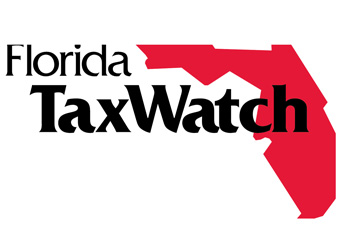
The Economic Impact of Student Loan Debt in Florida
Florida TaxWatch Provides Overview of Federal Student Loan Debt in Florida, Presents Economic Analysis of Cancellation
Tallahassee, Fla. – Florida TaxWatch (FTW) released An Update on Student Loan Forgiveness, an economic commentary providing a comprehensive overview of federal student loan debt in Florida. In this report, FTW evaluates the Biden administration’s failed student loan debt relief plan and examines another lesser-known federal student loan forgiveness plan, while also presenting an economic analysis of cancelling student loans.
Florida TaxWatch President and CEO Dominic M. Calabro said, “Student loan debt can be overwhelming, often discouraging younger generations from starting a family or preventing them from making strategic monetary investments, including realizing the American Dream of homeownership. And it’s a prevailing issue in Florida, where, as of March 2023, over 2.7 million borrowers owe a cumulative $105.5 billion in student loans, with the average around $37,000 per person.
“While widespread student loan forgiveness, like the plan President Biden introduced in 2022, may seem like a viable solution, it is not, and extreme caution must be exercised when considering this approach. For now, Florida TaxWatch encourages Floridians to contact their student loan service providers and prepare for repayment to begin in October.”
The three-part student loan debt relief plan announced by the Biden administration in August 2022, which was later ruled unconstitutional by the U.S. Supreme Court, would have provided one-time targeted student debt relief to approximately 40 million borrowers nationally. FTW asserts that it was “bad public policy” for three primary reasons: It oversteps the executive branch’s authority as vested in the U.S. Constitution; it creates “winners” – those whose student loan debt is forgiven – and “losers” – those who already paid off their debt; and it raises the issue of taking responsibility for one’s own finances. Additionally, if passed, the plan would have cost American taxpayers between $330 billion and $519 billion over the next 30 years.
In Florida, which is currently ranked third highest (behind California and Texas) in terms of outstanding student loan debt, 1.5 million borrowers had applied or were automatically eligible for relief through President Biden’s plan, and about one million had been fully approved. Now, with student loan repayments resuming in October 2023, FTW estimates 12 percent of all Floridians will still be paying off their debt, rather than contributing to the state’s economic growth.
Finally, through the Income-Driven Repayment (IDR) Plan recently renewed by the Biden administration – which allows for any remaining student loan debt to be forgiven after a pre-decided amount of qualifying monthly payments are made (equivalent of 20 to 25 years) – FTW notes 56,930 Floridians with federal student loan debt are automatically eligible for relief, amounting to $3 billion in discharges.
To access the full report, please click here.
About Florida TaxWatch
As an independent, nonpartisan, nonprofit government watchdog and taxpayer research institute for more than forty years and the trusted eyes and ears of Florida taxpayers, Florida TaxWatch works to improve the productivity and accountability of Florida government. Its research recommends productivity enhancements and explains the statewide impact of fiscal and economic policies and practices on taxpayers and businesses. Florida TaxWatch is supported by its membership via voluntary, tax-deductible donations and private grants. Donations provide a solid, lasting foundation that has enabled Florida TaxWatch to bring about a more effective, responsive government that is more accountable to, and productive for, the taxpayers it serves since 1979. For more information, please visit www.floridataxwatch.org.
Angela Small
Radio Production Assistant















